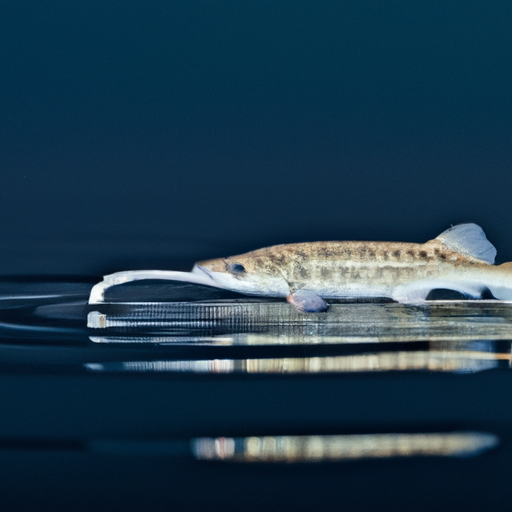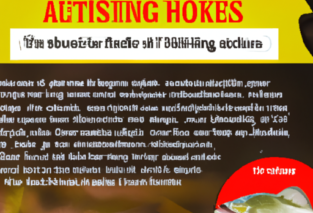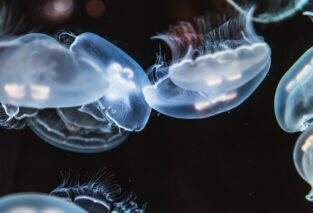Have you ever wondered why some days you catch fish easily while other days you struggle? Well, the secret lies in the moon phases. “The Role of Moon Phases in Fishing for Beginners” is an essential guide that uncovers the influence of moon phases on fishing success. Whether you’re a novice angler or a seasoned fisherman, this article will provide you with valuable insights on how to maximize your chances of landing that prized catch by understanding and utilizing the power of the moon. So grab your fishing gear and get ready to learn the secrets of lunar fishing!

Understanding Moon Phases
The Different Phases of the Moon
The moon goes through various phases in its monthly cycle, with each phase having a different appearance as seen from Earth. These phases include the New Moon, First Quarter, Full Moon, and Third Quarter. Understanding these phases is crucial for anglers who want to maximize their chances of a successful fishing trip.
Impact of Moon Phases on Fishing
Believe it or not, moon phases play a significant role in fish behavior and can greatly influence fishing success. Fish are highly sensitive to environmental factors, and the moon’s phases directly affect their feeding patterns, activity levels, and migration behaviors. To become a skilled angler, it is essential to learn about and consider the moon’s influence on fishing.
Moon Phase and Fish Feeding Patterns
Full Moon
During the full moon phase, the moon appears as a complete circle in the sky, illuminating the night with its radiant glow. This phase tends to trigger increased fish activity, especially for species that are predominantly nocturnal feeders such as catfish and bass. The well-lit night provides them with better visibility, making them more active and eager to feed.
New Moon
The new moon phase is the opposite of the full moon, representing the moon’s shadowed side. During this phase, anglers might encounter more challenging fishing conditions. Fish tend to be less active and show less interest in feeding during this time. However, some species like trout and salmon, which often rely on visual cues to locate their prey, may still be enticed by artificial lures that mimic their natural prey.
First Quarter
The first quarter phase occurs when the moon is half-illuminated, resembling a perfect semicircle in the sky. This phase can be a prime time for fishing, as fish are more likely to be actively feeding. The increasing light contributes to improved visibility, motivating fish to venture out and search for food. Anglers targeting species such as crappie and bass should take advantage of this phase to increase their chances of a successful catch.
Third Quarter
The third quarter phase represents the moon being half-illuminated but in the opposite direction from the first quarter. During this phase, expect fish to exhibit decreased activity levels. They may be more cautious and selective in their feeding habits. However, experienced anglers have found success using live bait, as it can still entice fish to strike during this phase.
Tides and Moon Phases
Understanding Tides
Tides are the rise and fall of sea levels caused by the gravitational pull of the moon and the sun on Earth’s oceanic waters. Tides are classified into two main categories: high tide and low tide. High tide occurs when the sea level is at its highest, while low tide occurs when the sea level is at its lowest. The movement of tides has a profound impact on fishing environments.
How Moon Phases Affect Tides
The gravitational force from the moon and the sun affects the magnitude of tides. During the full moon and new moon phases, when the sun, moon, and Earth align, tidal ranges are at their peak, creating what is known as spring tides. Conversely, during the first and third quarter phases, when the sun and moon are at a right angle to each other in relation to Earth, tidal ranges are at their minimum, resulting in neap tides. Understanding these tide variations is essential for successful fishing.
Fishing Tactics Based on Tides
During high tide, fish often move closer to the shore, seeking shelter, food, and strong currents that carry prey to them. This provides excellent fishing opportunities for species like redfish, flounder, and striped bass. During low tide, fish tend to congregate in deeper channels, creating prime fishing spots for species like trout and snook. Adapting your fishing tactics to match the tides can significantly improve your chances of landing a prized catch.
Effect of Moon Phase on Fish Behavior
Moon Phase and Fish Activity
The moon’s phases directly impact fish activity. During the full moon and new moon phases, fish are generally more active due to the increased light availability, making them more likely to feed. However, during the first and third quarter phases, fish may exhibit reduced activity levels and be more cautious. Understanding these behavior changes is crucial for planning your fishing strategy effectively.
Moon Phase and Fish Migration
Fish migration is influenced by various factors, including moon phases. Many fish species, such as salmon and steelhead, undertake remarkable migrations to spawn in their natal waters. These migrations often align with specific moon phases, facilitating navigation and providing optimal conditions for successful reproduction. Anglers targeting migratory species should take into account the moon phases to plan their fishing trips accordingly.
Spawning Behavior and Moon Phases
The moon’s phases also influence fish spawning behavior. Some species, like bass and crappie, tend to spawn during the full moon phase. The increased light during this time improves visibility, allowing fish to find suitable spawning grounds and increasing their chances of successful reproduction. Understanding the correlation between moon phases and fish spawning behavior can help anglers identify the best times and locations to target spawning fish.

Best Moon Phases for Different Fish Species
Bass Fishing
Bass fishing enthusiasts often consider the full moon phase as the best time to target these prized sportfish. During this phase, bass tend to be more actively feeding, particularly during the night. Fishing around cover and employing topwater lures can yield excellent results.
Trout Fishing
Trout are well-known for their reliance on visual cues to locate prey. During the new moon phase, when natural light is limited, trout can become more opportunistic and strike at lures that imitate their favorite food sources. Fishing during the early morning or late evening hours can maximize your chances of a successful trout catch.
Crappie Fishing
Crappie are highly prolific and popular among anglers. The first quarter phase often proves to be productive for crappie fishing, as they tend to move to shallower waters and become more active during this time. Using live bait, such as minnows or small jigs, can attract crappie effectively.
Catfish Fishing
Catfish are known to thrive during the full moon phase. The increased light during this time enhances their visibility, making them more active and responsive to bait. Bottom fishing with stinky baits like chicken liver or nightcrawlers can yield excellent results when targeting catfish.
Salmon Fishing
Salmon exhibit remarkable migratory behavior and are strongly influenced by moon phases when it comes to their spawning patterns. Timing your salmon fishing trips to coincide with the appropriate moon phases can significantly increase your chances of hooking onto a magnificent salmon.
Saltwater Fishing
In saltwater environments, moon phases play a vital role, particularly for species like redfish, snook, and tarpon. Fishing during the early morning or evening hours around high tide, especially during the full or new moon phases, can provide an adrenaline-filled experience targeting these hard-fighting saltwater species.
Techniques for Fishing at Different Moon Phases
Full Moon Fishing Techniques
During the full moon phase, fish tend to be more active and responsive to different fishing techniques. Anglers can try using topwater lures during low light hours, such as sunrise or sunset, to entice bass, trout, and other species. Fishing near structures like docks or fallen trees can provide excellent opportunities for targeting actively feeding fish.
New Moon Fishing Techniques
Fishing during the new moon phase can pose some challenges, as fish may be less active and more selective in their feeding habits. However, using lures that closely resemble the natural prey of the targeted fish can still attract strikes. Slowly retrieving lures and focusing on areas with cover or changes in depth can increase your chances of success.
First Quarter Fishing Techniques
The first quarter phase is an excellent time to cover a larger area as fish tend to be more active and searching for food. Using lures that mimic the local forage and experimenting with different retrieve speeds can help determine what triggers the fish’s interest. Paying attention to structure and areas with potential ambush points can also lead to better catches.
Third Quarter Fishing Techniques
During the third quarter phase, fish may exhibit reduced activity levels and become more cautious. To entice strikes, using live or natural baits can be effective, as they emit enticing scents and mimics the prey fish are accustomed to. Slow presentations near deeper structures or drop-offs can increase your chances of enticing a bite.
Considering Other Factors
Weather Conditions
While moon phases are important, other factors like weather conditions can also influence fish behavior. Paying attention to barometric pressure, wind direction, and air temperature can provide valuable insights into fish activity levels.
Water Temperature
Water temperature is a critical element to consider when fishing. The moon’s phases do not directly affect water temperature, but they can indirectly influence it. Understanding how different fish species react to specific water temperatures can help anglers determine the best moon phases to target those species.
Location and Habitat
Fish species differ in their preferred habitats and locations. Moon phases are just one piece of the larger puzzle. Researching and understanding the specific needs and behaviors of your target species can give you a better chance of success regardless of the moon phase.
Time of Day+
Although moon phases certainly play a role, fish behavior can also vary throughout the day. Factors such as sunrise, sunset, and even moonrise and moonset times can influence fish activity levels. Consulting local fishing guides or experienced anglers can provide valuable insights into the best times to fish during different moon phases.
Moon Phase Tools and Apps
Moon Phase Calendars
Moon phase calendars are a valuable resource for anglers looking to plan their fishing trips. These calendars provide information on the moon’s various phases, including the date and time of each phase. By using a moon phase calendar, you can determine the best days to maximize your fishing success.
Moonrise and Moonset Times
Knowing the moonrise and moonset times can help you plan your fishing trips more efficiently. Moonrise and moonset times determine the duration and intensity of moonlight, which can greatly impact fish behavior. Key fishing periods often coincide with the moon rising or setting, so be sure to check these times before heading out.
Moon Phase Smartphone Apps
In today’s digital age, smartphone apps have become a convenient way to access various moon phase tools. Moon phase apps provide real-time updates on the moon’s phases, moonrise, moonset times, and other relevant information. Having these tools at your fingertips makes it easier than ever to plan your fishing adventures around the moon’s influence.
Myths and Misconceptions about Moon Phases
Old Tales and Superstitions
Throughout history, moon phases have been associated with numerous tales and superstitions, many of which have been passed down through generations. While these stories can add a sense of mystique to fishing, it’s essential to rely on scientific explanations and empirical evidence when making decisions based on moon phases.
Scientific Explanations Behind Traditions
While some traditional beliefs may lack scientific basis, there are observable patterns and explanations behind the influence of moon phases on fish behavior. The gravitational force exerted by the moon affects ocean tides, which in turn impact the movement and behavior of many marine species. Understanding these scientific explanations can help anglers make informed decisions when planning their fishing trips.
Conclusion
Moon phases undeniably play a significant role in fishing success. By understanding the different moon phases, their impact on fish behavior, and employing the appropriate fishing techniques, you can greatly increase your chances of landing a memorable catch. Remember, while moon phases offer valuable insights, other factors such as weather conditions, water temperature, and time of day should also be considered. So, arm yourself with knowledge, embrace the lunar influence, and embark on unforgettable fishing adventures.





